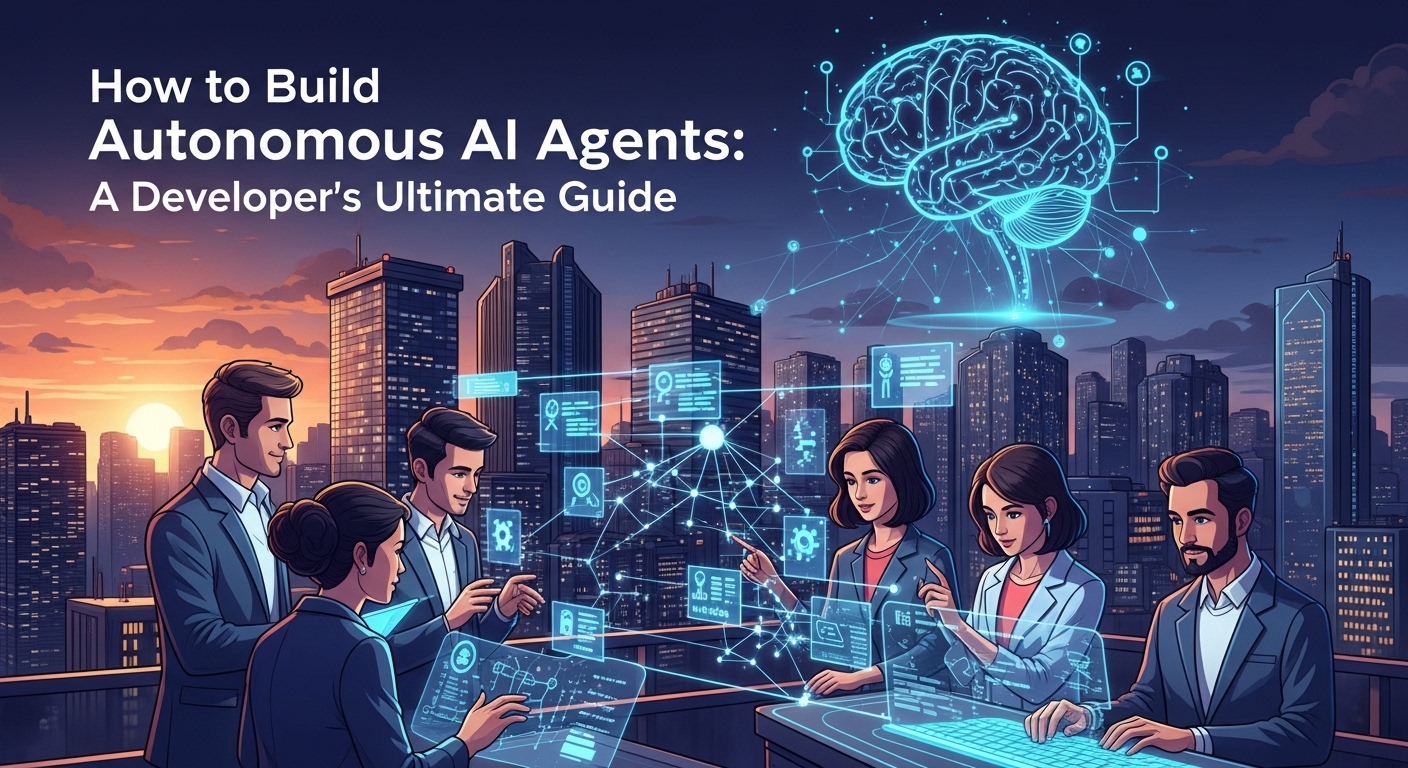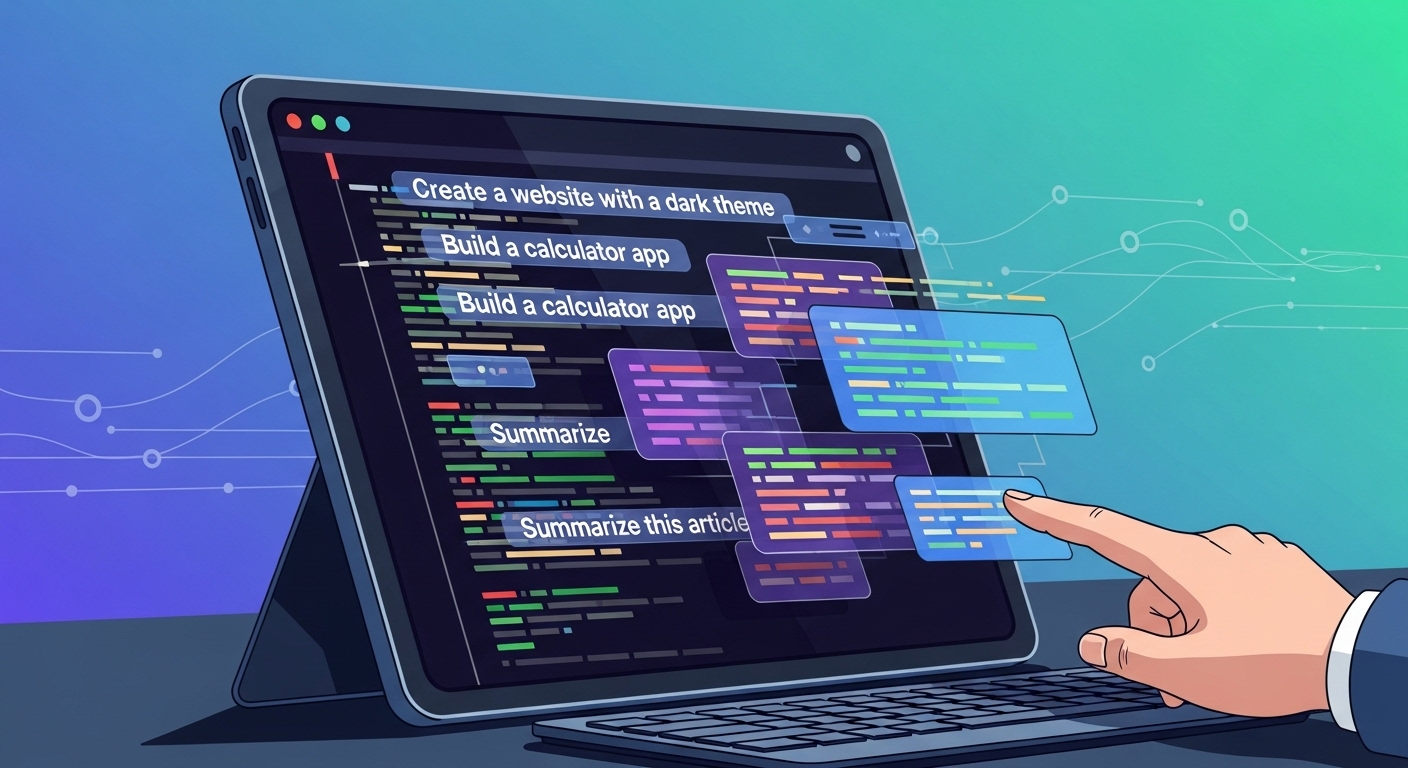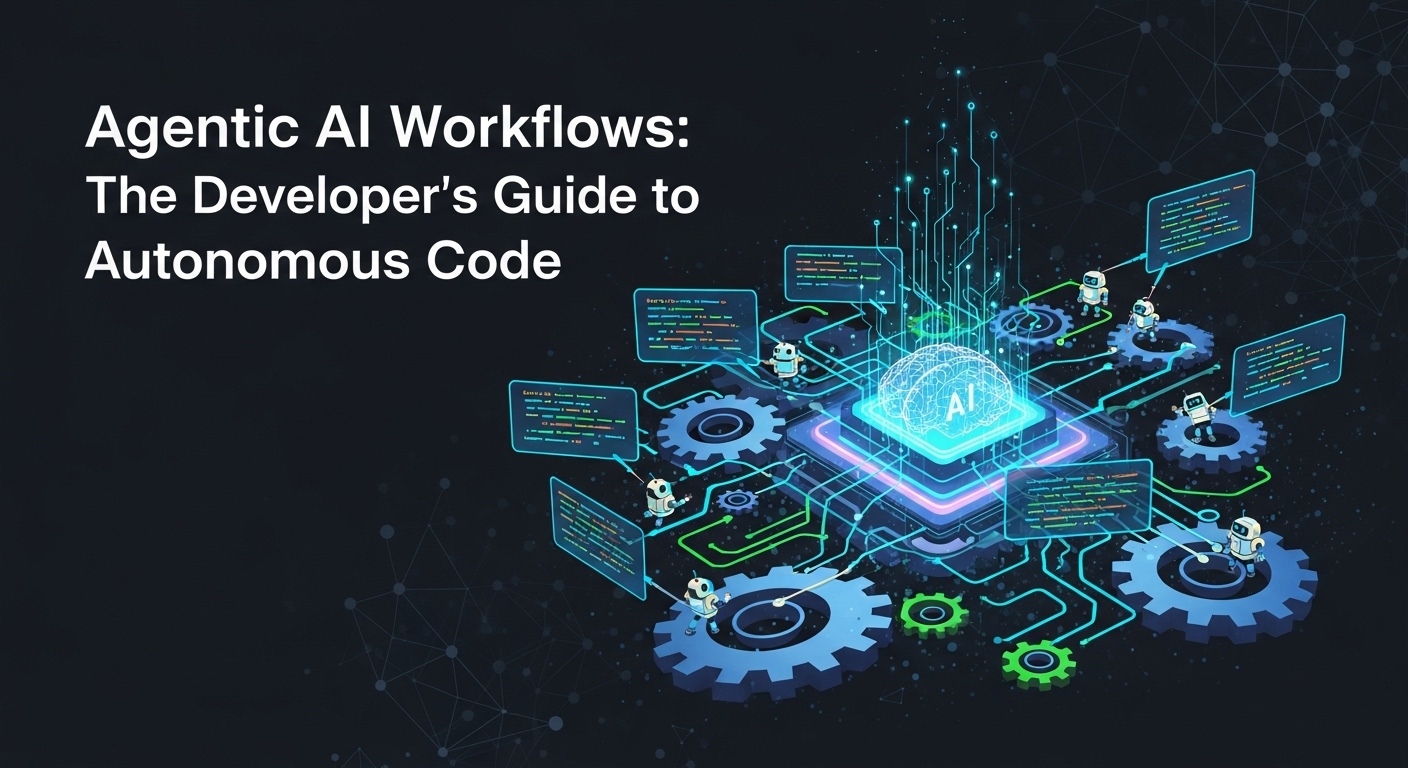What Exactly Are Autonomous AI Agents?
You’ve likely interacted with AI chatbots, but autonomous AI agents are a significant leap forward. They represent a paradigm shift in how we think about artificial intelligence. While a chatbot is primarily reactive, waiting for a prompt to provide a response, an AI agent is proactive. It can reason, plan, and execute a series of actions to achieve a complex, high-level goal without constant human intervention.
Beyond Simple Chatbots: The Leap to Agency
Think of it this way: you can ask a chatbot to write a Python script for you. You provide the prompt, it provides the code. The interaction ends there. An autonomous agent, on the other hand, can be given a goal like, “Build a web scraper to get the top 10 articles from Hacker News and email them to me as a summary.”
To accomplish this, the agent would:
- Plan: Break down the goal into smaller, manageable steps: 1. Write the scraper code. 2. Execute the code to fetch data. 3. Use an LLM to summarize the articles. 4. Write code to use an email API. 5. Send the final email.
- Use Tools: It would access a code interpreter to write and run the Python script, a web browser tool to access Hacker News, and an email API tool to send the message.
- Self-Correct: If the initial scraping script fails due to a website change, it might try a different approach or use a search tool to find a solution, all without you needing to step in.
This ability to plan, use tools, and adapt is the essence of agency. It’s a core concept in the evolution of AI for developers and is unlocking capabilities we could only dream of a few years ago.
The Core Components of an AI Agent
While the architecture can vary, most autonomous agents are built around a few key components:
- The Brain (LLM): At the heart of every agent is a powerful Large Language Model (LLM) like GPT-4, Claude 3, or Llama 3. The LLM provides the reasoning, comprehension, and planning capabilities.
- Planning Module: This component takes a high-level goal and breaks it down into a sequence of executable steps. It formulates a strategy to achieve the objective.
- Memory: Agents need memory to learn from past interactions and maintain context. This can be short-term (like the history of the current task) or long-term (a vector database of past experiences and knowledge).
- Tools: This is what gives an agent its power. Tools are external functions or APIs that the agent can call upon. Examples include a web search API, a code interpreter, a file system reader/writer, or any custom function you expose to it.
Why Every Developer Should Be Paying Attention to AI Agents
The rise of autonomous agents isn’t just an academic curiosity; it’s a practical revolution that will redefine software development and the applications we build. For developers, this technology opens up a new frontier of automation and innovation.
Automating Complex Developer Workflows
Imagine an AI agent that can act as a junior developer on your team. You could assign it a ticket from your project management system, and it could:
- Read the ticket requirements.
- Check out the relevant code from a Git repository.
- Write the necessary code changes.
- Create and run unit tests to ensure nothing breaks.
- Commit the code and open a pull request for your review.
This level of automation can drastically accelerate development cycles, handle repetitive tasks, and free up senior developers to focus on high-level architecture and complex problem-solving. This is the future of AI for developers: not replacing them, but augmenting their abilities.
Creating Sophisticated, Self-Sufficient Applications
Beyond developer tooling, agents can be the core of next-generation applications. Consider a personal finance app that doesn’t just show you charts but has an agent that actively works to optimize your savings. It could analyze your spending, find better deals on your subscriptions, and even negotiate bills on your behalf, all while learning your preferences over time.
The Developer’s Toolkit: Frameworks for Building AI Agents
Building an agent from scratch is a complex undertaking. Thankfully, a vibrant ecosystem of frameworks has emerged to simplify the process. These tools provide the scaffolding, allowing you to focus on the unique logic of your agent.
LangChain: The Swiss Army Knife for LLM Applications
LangChain is arguably the most popular and comprehensive framework in this space. It provides a modular set of tools for building LLM-powered applications, with a strong focus on agents. LangChain’s agent executors are built around concepts like the ReAct (Reason and Act) framework, where the LLM is prompted to reason about what to do next and which tool to use. It offers pre-built integrations for hundreds of tools, making it easy to connect your agent to the outside world.
AutoGen: Microsoft’s Multi-Agent Conversation Framework
AutoGen takes a different approach. Instead of focusing on a single agent with multiple tools, it specializes in creating a system of multiple agents that collaborate to solve a problem. You can define different roles, such as a `Planner`, a `Coder`, and a `Critic`. The `Planner` creates a plan, the `Coder` writes the code, and the `Critic` reviews it and provides feedback. This conversational, multi-agent approach can often lead to more robust and well-thought-out solutions for complex tasks.
Other Notable Frameworks
The ecosystem is growing rapidly. Frameworks like CrewAI are gaining popularity for their role-based approach to orchestrating autonomous agents, making it intuitive to set up collaborative agent teams. Older projects like BabyAGI provided some of the initial inspiration for autonomous task completion loops.
A Practical Blueprint: Steps to Build Your First AI Agent
Ready to dive in? Building your first agent is an exciting process. Here’s a step-by-step blueprint to guide you.
Step 1: Define the Goal and Scope
This is the most critical step. Be specific. “Make a useful AI” is not a goal. “Create an AI agent that monitors a specific GitHub repository for new issues with the ‘bug’ label and generates a preliminary analysis of the issue” is a great goal. A clear objective will guide all your subsequent technical decisions.
Step 2: Choose Your LLM (The Brain)
Your choice of LLM will significantly impact your agent’s performance and cost. Consider models like OpenAI’s GPT-4 for top-tier reasoning, Anthropic’s Claude 3 for its large context window, or open-source models like Llama 3 if you need more control or want to run it locally. There’s a trade-off between capability, speed, and cost.
Step 3: Select Your Framework and Tools
Based on your goal, pick a framework. For a general-purpose agent with various tools, LangChain is a great start. If your task benefits from multiple specialized perspectives, consider AutoGen or CrewAI. Then, define your tools. What functions does your agent need? A GitHub API client? A web search tool? A vector database for knowledge retrieval?
Step 4: Implement the Agent Logic (Planning and Execution)
This is where you’ll write the code that ties everything together. You’ll instantiate your LLM, define your tools, and create the agent executor using your chosen framework. The core of this is the prompt you design. Your prompt engineering will guide the LLM’s reasoning process, teaching it how to use the tools effectively to achieve its goal. This is the art and science of building with AI for developers.
Step 5: Test, Iterate, and Refine
Your agent will not work perfectly on the first try. It might get stuck in loops, use tools incorrectly, or misunderstand the goal. Testing is crucial. Observe its behavior, analyze the logs of its reasoning process, and refine your prompts, tools, or overall strategy. Add guardrails to prevent it from performing dangerous actions and implement monitoring to keep an eye on API costs.
Challenges and Ethical Considerations in Agent Development
As with any powerful technology, building autonomous agents comes with responsibilities and challenges.
The “Hallucination” Problem
LLMs can sometimes generate plausible but incorrect information. When an agent acts on this false information, the consequences can be more severe than just a wrong answer in a chat. Grounding your agent with reliable tools like knowledge bases or search APIs is essential.
Security Risks and Sandboxing
Giving an AI agent access to tools like a file system or a terminal is incredibly powerful but also risky. It’s critical to run agents in a sandboxed environment to limit potential damage if they behave unexpectedly or are manipulated by malicious input.
Cost Management and Runaway Loops
Agents often make many LLM calls in a single run. If an agent gets stuck in a loop, it can rack up a significant bill on your API account very quickly. Implement circuit breakers, set budget limits, and monitor your usage closely.
Join the AI Revolution: Start Building Today
Autonomous AI agents are more than just a trend; they are the next step in the evolution of software and a cornerstone of modern AI for developers. They promise to automate complex tasks, create smarter applications, and fundamentally change how we interact with technology. The frameworks and tools are accessible, and the community is buzzing with innovation.
The best way to understand the power and potential of AI agents is to build one yourself. Start with a small, well-defined project. Experiment, learn, and be part of shaping the future of software development. The journey is challenging, but the rewards are immense.
What’s the first autonomous agent you’re planning to build? Share your ideas in the comments below!


